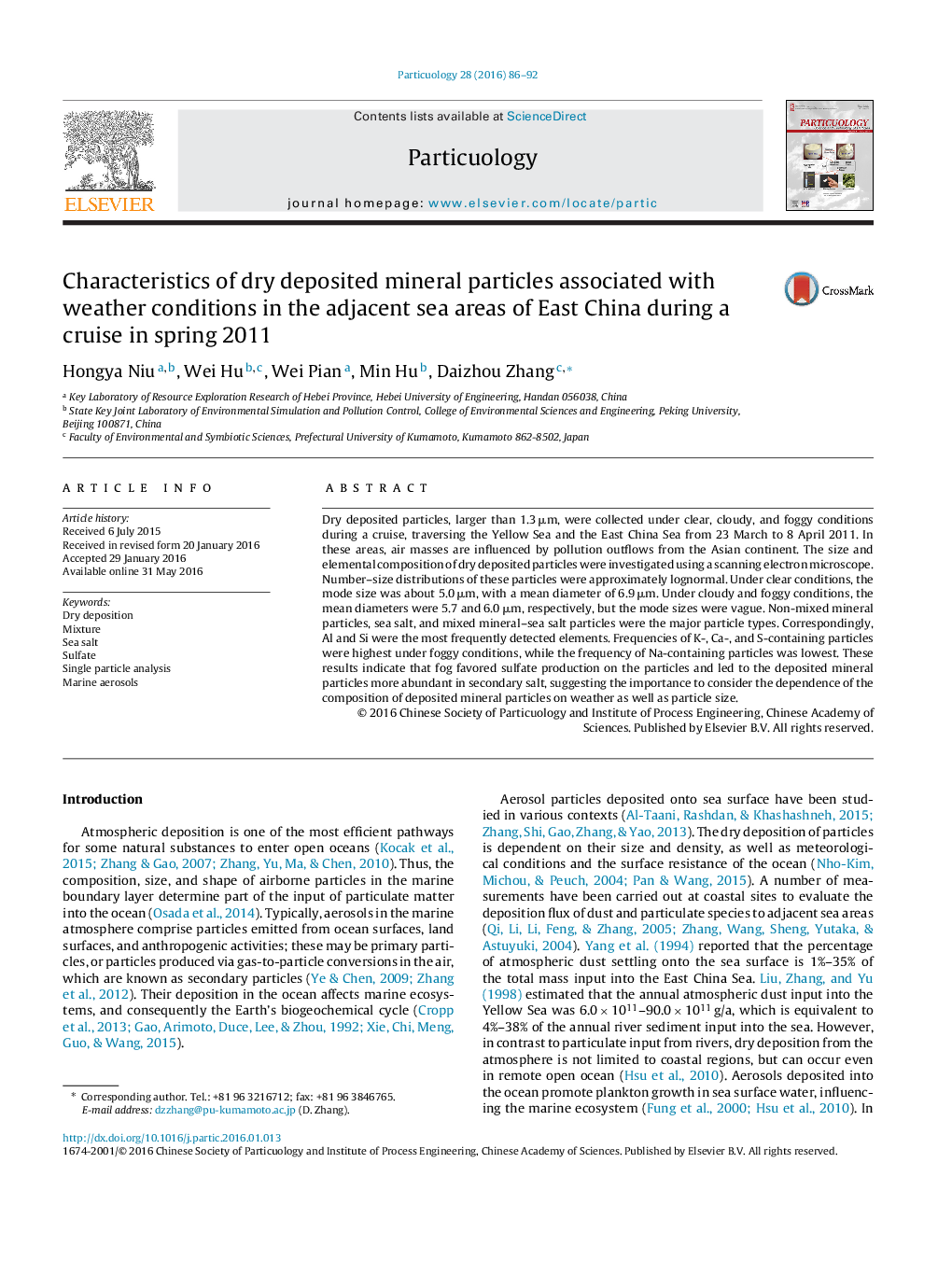| Article ID | Journal | Published Year | Pages | File Type |
|---|---|---|---|---|
| 671714 | Particuology | 2016 | 7 Pages |
•Dry deposited mineral particles to the adjacent sea areas of East China were analyzed.•Size distributions of the particles differed in modes with weather conditions.•Fog favored sulfate formation on the particles but did not cause frequent sea salt adherence.•There was a non-ignorant dependence of the particles in composition on weather.
Dry deposited particles, larger than 1.3 μm, were collected under clear, cloudy, and foggy conditions during a cruise, traversing the Yellow Sea and the East China Sea from 23 March to 8 April 2011. In these areas, air masses are influenced by pollution outflows from the Asian continent. The size and elemental composition of dry deposited particles were investigated using a scanning electron microscope. Number–size distributions of these particles were approximately lognormal. Under clear conditions, the mode size was about 5.0 μm, with a mean diameter of 6.9 μm. Under cloudy and foggy conditions, the mean diameters were 5.7 and 6.0 μm, respectively, but the mode sizes were vague. Non-mixed mineral particles, sea salt, and mixed mineral–sea salt particles were the major particle types. Correspondingly, Al and Si were the most frequently detected elements. Frequencies of K-, Ca-, and S-containing particles were highest under foggy conditions, while the frequency of Na-containing particles was lowest. These results indicate that fog favored sulfate production on the particles and led to the deposited mineral particles more abundant in secondary salt, suggesting the importance to consider the dependence of the composition of deposited mineral particles on weather as well as particle size.
Graphical abstractFigure optionsDownload full-size imageDownload as PowerPoint slide
